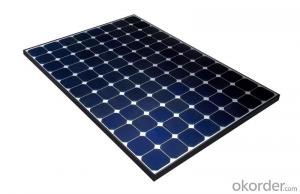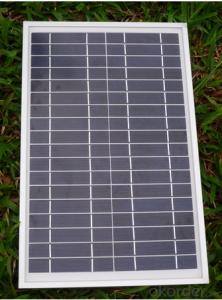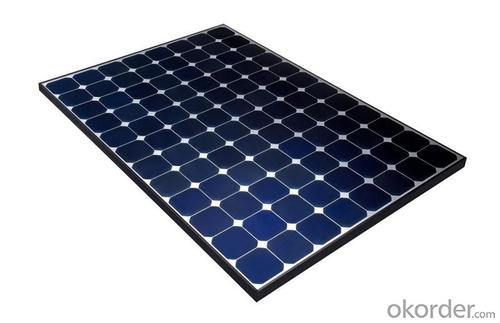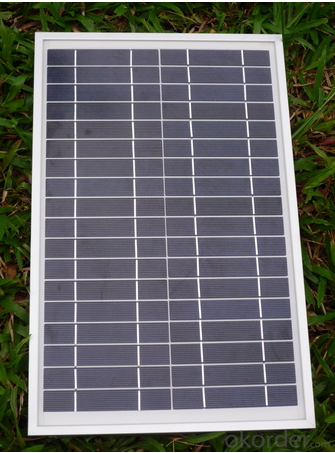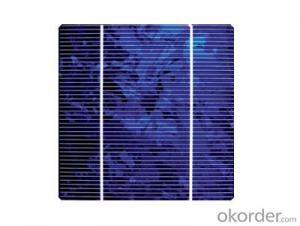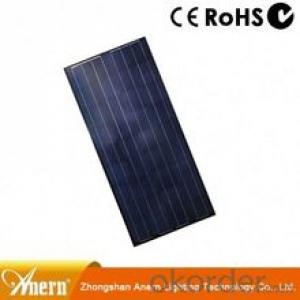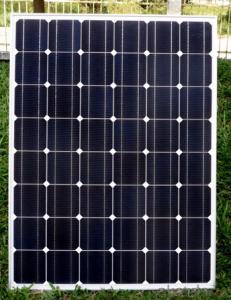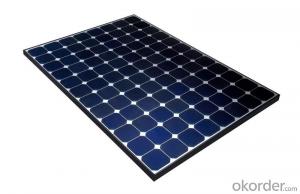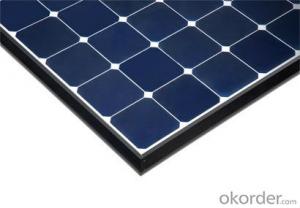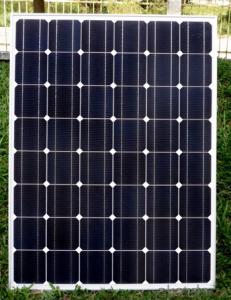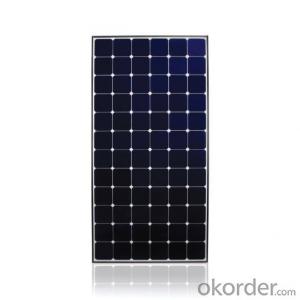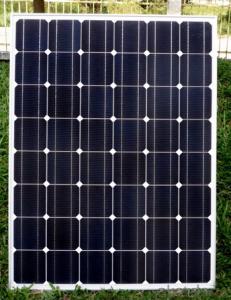Loose Solar Cells - Poly Solar Panel 105w A Grade with 12 Years Warranty
- Loading Port:
- Shanghai
- Payment Terms:
- TT OR LC
- Min Order Qty:
- 100 watt
- Supply Capability:
- 1000 watt/month
OKorder Service Pledge
OKorder Financial Service
You Might Also Like
Specification
Poly Solar Panel 105W A Grade with 12 Years Warranty
Production description
The International Energy Agency projected in 2014 that under its "high renewables" scenario, by 2050, solar photovoltaics and concentrated solar power would contribute about 16 and 11 percent, respectively, of the worldwide electricity consumption, and solar would be the world's largest source of electricity. Most solar installations would be in China and India.[2]
It may also use a solar tracking system to improve the system's overall performance and include an integrated battery solution, as prices for storage devices are expected to decline. Strictly speaking, a solar arrayonly encompasses the ensemble of solar panels, the visible part of the PV system, and does not include all the other hardware, often summarized as balance of system (BOS). Moreover, PV systems convert light directly into electricity and shouldn't be confused with other technologies, such as concentrated solar power or solar thermal, used for heating and cooling.
Operating silently and without any moving parts or environmental emissions, PV systems have developed from being niche market applications into a mature technology used for mainstream electricity generation. A rooftop system recoups the invested energy for its manufacturing and installation within 0.7 to 2 years and produces about 95 percent of net clean renewable energy over a 30-year service lifetime.[1]:30[2][3]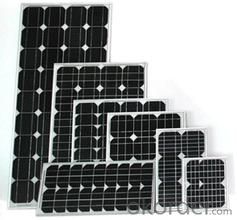
Application
Commercial
Industrial
Residential
Product Feature
12 years quality warranty 25 years performance output.
Free for less than 5 pcs sample requirement
Free to replace or repair or refund if products fail to conform to the PI requirement.
Packaging
28pcs into carton 2carton into pallets 28pallets into a 40ft container
Delivery
After 25 days for manufacturered goods as soon as we received full payment.
After 10 days for stock goods as soon as we received full payment.
- Q: Can solar cells be used in art installations?
- Yes, solar cells can definitely be used in art installations. They can be incorporated into various forms of artistic expression, such as sculptures, installations, and even interactive pieces. Solar cells not only provide a sustainable source of energy but also add an element of innovation and environmental consciousness to art. Their ability to generate electricity from sunlight opens up endless possibilities for creativity and the integration of technology in artistic displays.
- Q: Can solar cells be used in remote areas?
- Yes, solar cells can be used in remote areas. Solar cells are a reliable and sustainable energy solution that can be installed in remote areas to generate electricity from sunlight, even in the absence of a traditional power grid. They provide an independent and cost-effective source of energy, making them ideal for powering remote communities, off-grid locations, and areas with limited access to electricity.
- Q: Can anybody tell me the power supply of the home solar cell?
- l can give you an example as following: 40W * 4H=160Wh=0.16 degree power In accordance with the summer sunny weather one day 5 standard sun, consider 70% system efficiency 160 / 5 / 70%=45.7W, so 50 Watt Solar cell is enough.
- Q: What is the impact of solar cells on reducing energy poverty?
- Solar cells have a significant impact on reducing energy poverty by providing access to clean and affordable electricity in remote and underserved areas. By harnessing the power of the sun, solar cells offer a sustainable and renewable energy solution, eliminating the reliance on fossil fuels and costly infrastructure. This empowers communities to meet their energy needs, improve living conditions, and promote economic growth while reducing greenhouse gas emissions and combating climate change.
- Q: What is the role of inverters in solar cell systems?
- The role of inverters in solar cell systems is to convert the direct current (DC) generated by the solar panels into alternating current (AC) that can be used to power electrical devices or be fed back into the grid.
- Q: What is the impact of saltwater exposure on solar cell efficiency?
- Saltwater exposure can have a significant negative impact on solar cell efficiency. The saltwater can corrode the metal components of the solar cells, leading to a decrease in their performance and overall efficiency. Additionally, the saltwater can create a conductive pathway that can bypass the solar cells, resulting in a loss of electrical energy. Therefore, it is crucial to protect solar cells from saltwater exposure to maintain their efficiency and prolong their lifespan.
- Q: Can solar cells be used in disaster response vehicles?
- Yes, solar cells can be used in disaster response vehicles. They can provide a reliable and renewable source of power to charge essential equipment and devices, such as communication systems, lights, and medical equipment. Solar cells are especially useful in remote or off-grid areas where traditional power sources may be disrupted or unavailable during a disaster.
- Q: How do solar cells affect the value of a property?
- Solar cells can significantly increase the value of a property due to their ability to generate clean and renewable energy. The presence of solar panels can enhance the property's appeal, lower energy costs, and potentially provide a source of income through net metering or selling excess energy back to the grid.
- Q: How does solar cell technology apply to our daily life?
- Through high technology we are using now, solar cell energy is used in our daily life, such as the hot water you are use everyday in taking a shower.
- Q: Solar cell life for several years
- Photoelectric effect of the work of thin film solar cells as the mainstream, and the implementation of photochemical effects of solar cells is still in the embryonic stage.
Send your message to us
Loose Solar Cells - Poly Solar Panel 105w A Grade with 12 Years Warranty
- Loading Port:
- Shanghai
- Payment Terms:
- TT OR LC
- Min Order Qty:
- 100 watt
- Supply Capability:
- 1000 watt/month
OKorder Service Pledge
OKorder Financial Service
Similar products
Hot products
Hot Searches
Related keywords
